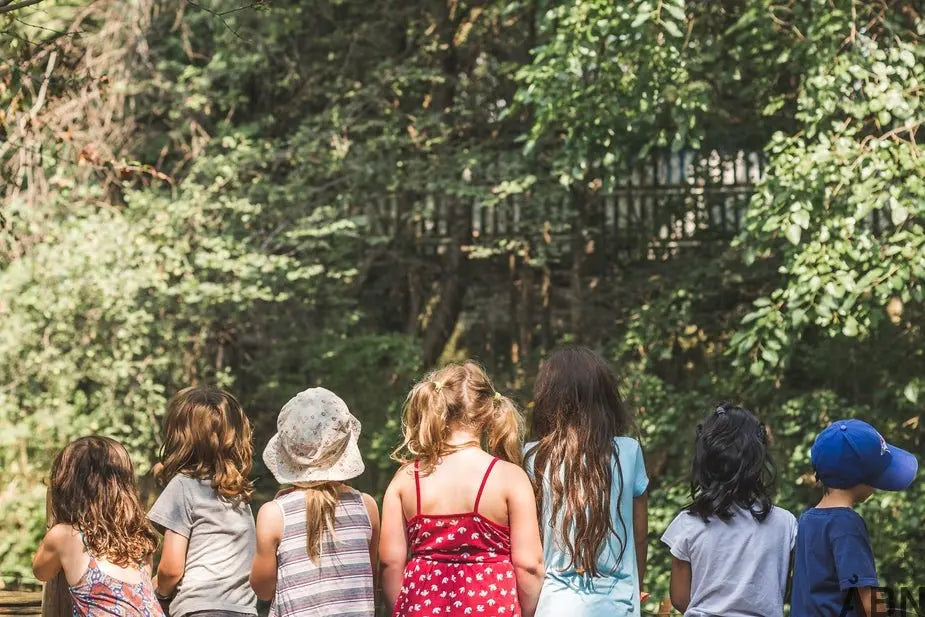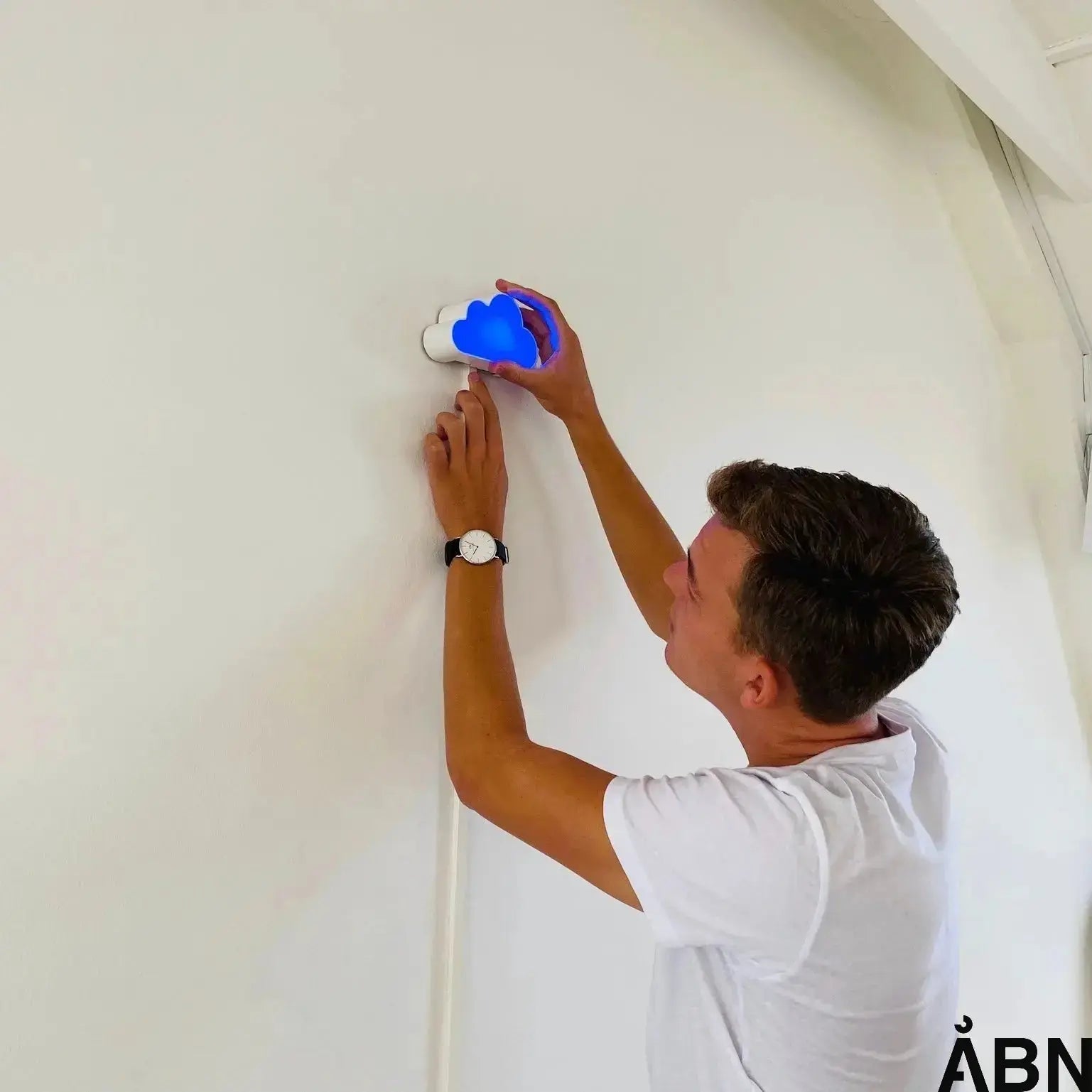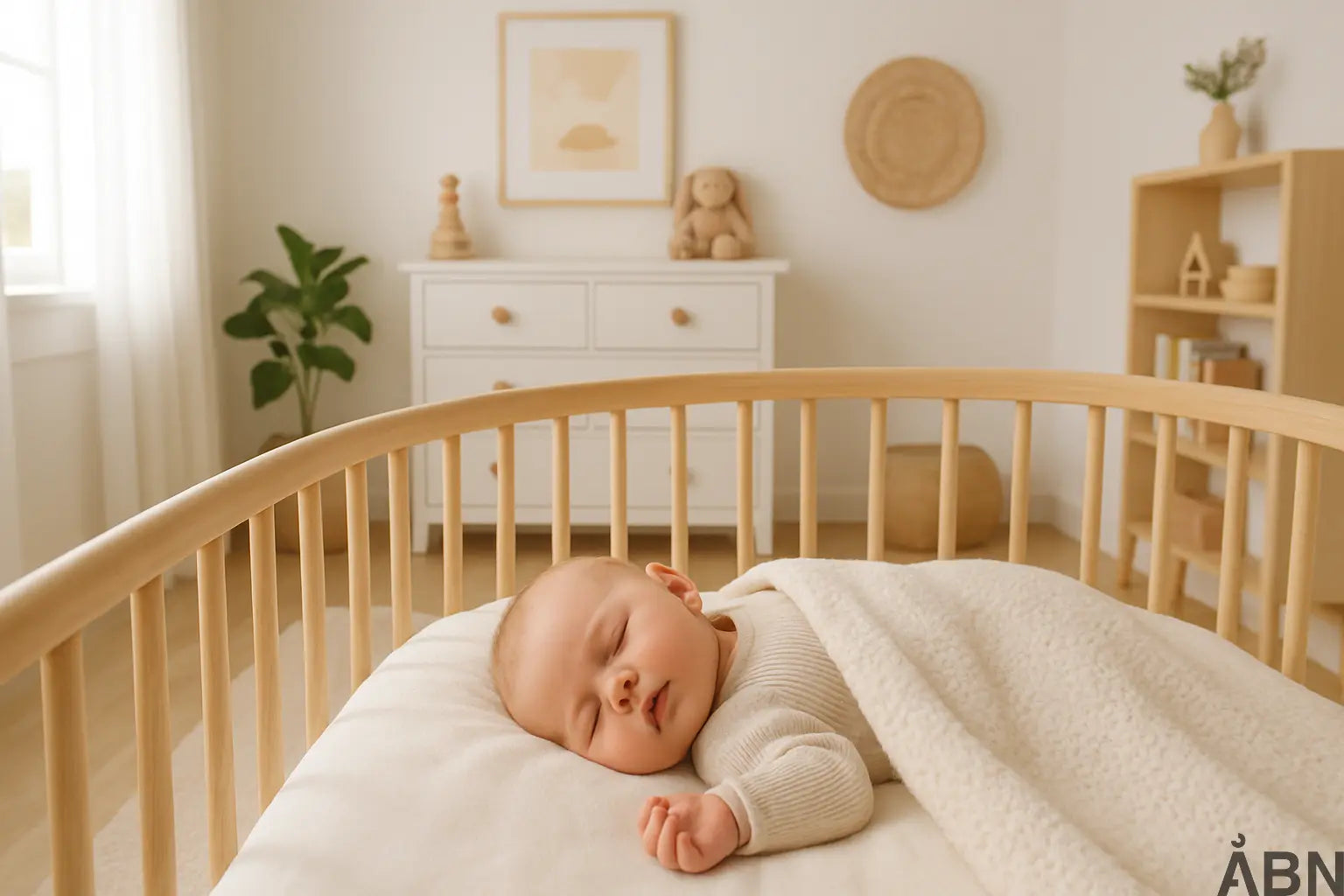This is the best temperature for your baby's room
As a parent or professional responsible for children's well-being, you may have come across the question: What is the optimal temperature in a baby's room? It may seem like a small detail, but the temperature in your child's environment plays a crucial role in both comfort, sleep quality and, not least, health. Especially for newborns and infants, who have not yet developed a fully functioning temperature regulation, it is important to create a safe and stable indoor climate.
In this article, we guide you through the ideal temperature in the baby's room, why it is important, and how you can easily ensure a healthy indoor climate - both as a parent and as a professional in daycare institutions, the healthcare sector or facility management.
Why is the temperature in the baby's room so important?
Imagine sleeping in a room that is either too hot or too cold. You wake up several times during the night, feel unwell, and your body uses unnecessary energy to regulate its temperature. The same – and more – applies to infants. They are extra sensitive to temperature fluctuations because their bodies are not yet able to regulate heat effectively.
Too high a temperature can lead to overheating, which according to the Danish Health Authority is a documented risk factor for sudden infant death syndrome (SIDS). Conversely, too low temperatures can disrupt sleep and make the baby restless. Therefore, it is crucial to find the right balance.
The recommended temperature in the baby's room
According to Danish health authorities and experts, the temperature in a baby's room should be between 18 and 21 degrees Celsius. For newborns, it is often recommended to keep the temperature a little higher – around 20 to 22 degrees – as they have more difficulty keeping warm on their own.
It's not just about comfort, it's also about safety. A stable temperature reduces the risk of overheating and creates a better sleeping environment for the child. At the same time, it reduces the risk of moisture and mold, which can occur in rooms with poor indoor climate and insufficient ventilation.
Temperature and clothing are related
The temperature in the room should be considered in conjunction with the child's clothing and bedding. A child sleeping with a thick duvet and woollen suit needs a cooler room than a child who only has a bodysuit and a light blanket. Use the rule of thumb: one more layer than you would wear yourself.
It is also important to avoid wearing outerwear and hats indoors, as this can lead to overheating – especially when the baby is sleeping. According to Snotbuster.dk , babies should be lightly dressed and have access to fresh air during the day.
How do you measure the temperature in the baby's room?
It may sound simple, but many parents and professionals guess at the temperature in a room. This can be a costly mistake. Always use a thermometer – preferably one that can measure both temperature and humidity. This gives you an accurate picture of the indoor climate and makes it easier to take action if the temperature moves outside the recommended range.
Average temperatures in Danish homes
A study by Bolius shows that Danish bedrooms average 18.7 degrees, while children's rooms are typically a little warmer – around 20.2 degrees. This is in line with the recommended levels, but it also highlights the importance of measuring and not just assuming.
Ventilation and air quality: An overlooked factor
Temperature is only one part of the equation. A good indoor climate is also about air quality. Poor ventilation can lead to dampness, mould and CO₂ build-up – all factors that negatively affect a child’s sleep and health.
At ÅBN, we work with solutions that visualize and improve the indoor climate – so that it becomes as easy to understand as the weather forecast. Our sensor solution, Skyen, makes it possible to monitor temperature, humidity and CO₂ levels in real time and provides concrete recommendations for action. This creates security – for both parents and professionals.
A healthy indoor climate is an investment in the future
Good ventilation and the correct temperature are not just nice details – they are the foundation for a child's well-being. A stable and healthy indoor climate can improve sleep quality, strengthen the immune system and reduce the risk of allergies and respiratory problems.
How to ensure the right temperature in practice
Here is some concrete advice on how you, as a parent or facility manager, can ensure an optimal baby room:
- Use an accurate thermometer – preferably one with the ability to read humidity.
- Keep the temperature between 18–21 degrees – and slightly higher (20–22) for newborns.
- Avoid overheating – remove outerwear and heavy blankets.
- Ensure good ventilation – air out daily and avoid stagnant air.
- Monitor the indoor climate digitally – with, for example, ÅBN's intuitive sensors and dashboards.
Indoor climate in institutions and professional environments
As a decision-maker in a daycare center, hospital or private children's clinic, it is important to ensure that all rooms where children stay have a healthy indoor climate. It is not just about comfort - it is about responsibility. With ÅBN's solutions, you get access to documentation and data that can be used for both internal quality assurance and external communication.
Read more about our technological solutions for institutions and how we help create a better indoor climate in children's environments.
FAQ: Frequently asked questions about temperature in baby's room
What is the best temperature in a baby's room?
The ideal temperature is between 18 and 21 degrees Celsius. For newborns, 20–22 degrees is recommended, as they have more difficulty regulating their body temperature.
How can I measure the temperature in the baby's room?
Use an accurate thermometer – preferably a digital one that can measure both temperature and humidity. Avoid relying on your gut feeling alone.
Is it dangerous if it is too hot in the baby's room?
Yes, too high a temperature can increase the risk of sudden infant death syndrome (SIDS), so it is important to avoid overheating and keep the temperature within the recommended range.
How does ventilation affect the temperature in the baby's room?
Good ventilation helps keep temperatures stable and improves air quality. It also reduces the risk of moisture and mold.









